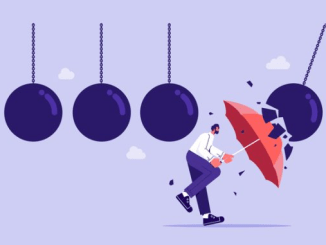Setbacks are not roadblocks but stepping stones, essential for growth and professional development. Acknowledging setbacks as integral to the journey fosters resilience, enabling leaders to approach challenges with a constructive mindset
CREDIT: This is an edited version of an article that originally appeared on Forbes
Resilience is more than bouncing back; it’s about adapting and thriving amidst challenges. True resilience demands emotional intelligence, mental fortitude, and a willingness to learn from failures. This article delves into the concept of resilience in leadership, exploring strategies to transform setbacks into opportunities for personal and organisational growth.
Embracing a growth mindset
A powerful comeback begins with a growth mindset—a belief in developing skills through dedication and hard work. This perspective fosters optimism, crucial for harnessing setbacks towards improvement. Without a growth mindset, setbacks become obstacles, not lessons.
Strategic planning: Push, push, pause
In uncertain times, strategic planning acts as a compass, but flexibility is key. The “push, push, pause” approach advocates for goal-oriented planning with room for recalibration. Resilient leaders adapt to evolving circumstances, avoiding rigid adherence to preconceived plans.
Practicing vulnerability for growth
Vulnerability, acknowledging limitations and uncertainties, creates fertile ground for growth. Leaders embracing vulnerability inspire trust, crucial for thriving in uncertainty. Openness to vulnerability allows better solutions and opportunities to emerge, turning setbacks into catalysts for positive change.
Embracing failure
Pursuing excellence over perfection acknowledges that being right isn’t the same as getting it right. Excellence is iterative, a constant pursuit, while perfection is finite. Leaders open to failure align with the pursuit of excellence, always striving for improvement and resiliently turning setbacks into comebacks.
Refining decision-making skills
Strong comebacks hinge on honing decision-making skills. Overcoming obstacles builds leaders’ analytical abilities, extracting insights for future planning and real-time pivoting. Improving decision-making is a measurable outcome of resilience developed through overcoming setbacks.
Leveraging networks and leading by example
Strength lies in networks, and leaders don’t need to navigate comebacks alone. Resilient leaders tap into strong networks for diverse perspectives, best practices, and support during setbacks. Effective leadership models resilience, propagating its practice and benefits throughout teams and organisations.
Cultivating patience for endurance
Resilience demands endurance, tightly linked with patience. Patience prevents rushed decisions, vital for long-term success. Recognising that progress may be gradual maintains momentum, even in adversity, fostering clarity and well-informed choices.
Avoiding dwelling on disappointment
Not all setbacks are equal, and disappointment is natural. However, dwelling on past failures impairs decision-making. Leaders acknowledging disappointment, learning from it, and avoiding fixation on failures maintain objectivity in evaluating new opportunities.
In the world of leadership, setbacks are not defeats but opportunities for growth. Understanding this truth is pivotal for building and leveraging true resilience. By adopting the right mindset and strategies, leaders turn setbacks into powerful comebacks, emerging stronger, wiser, and more capable than before.



Be the first to comment